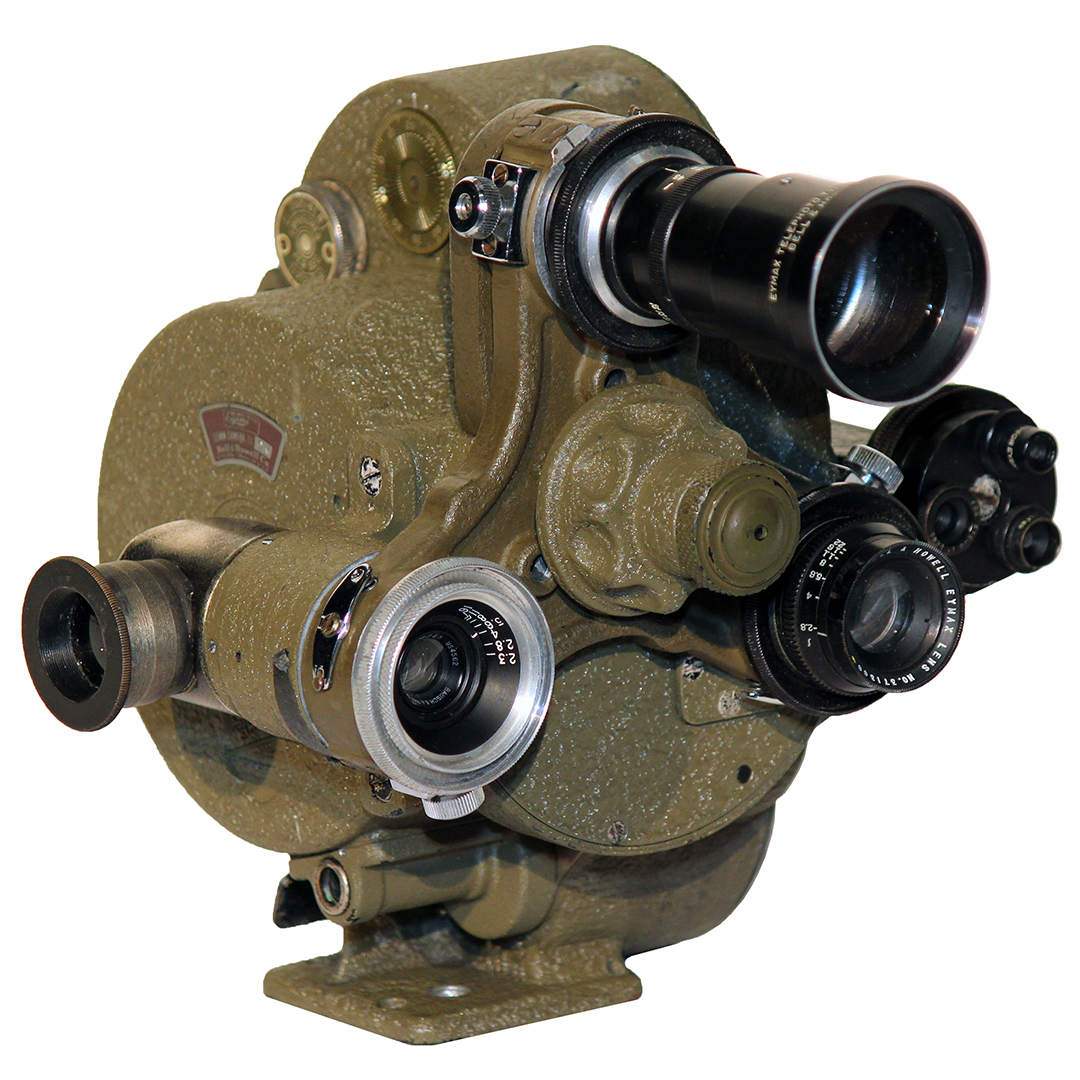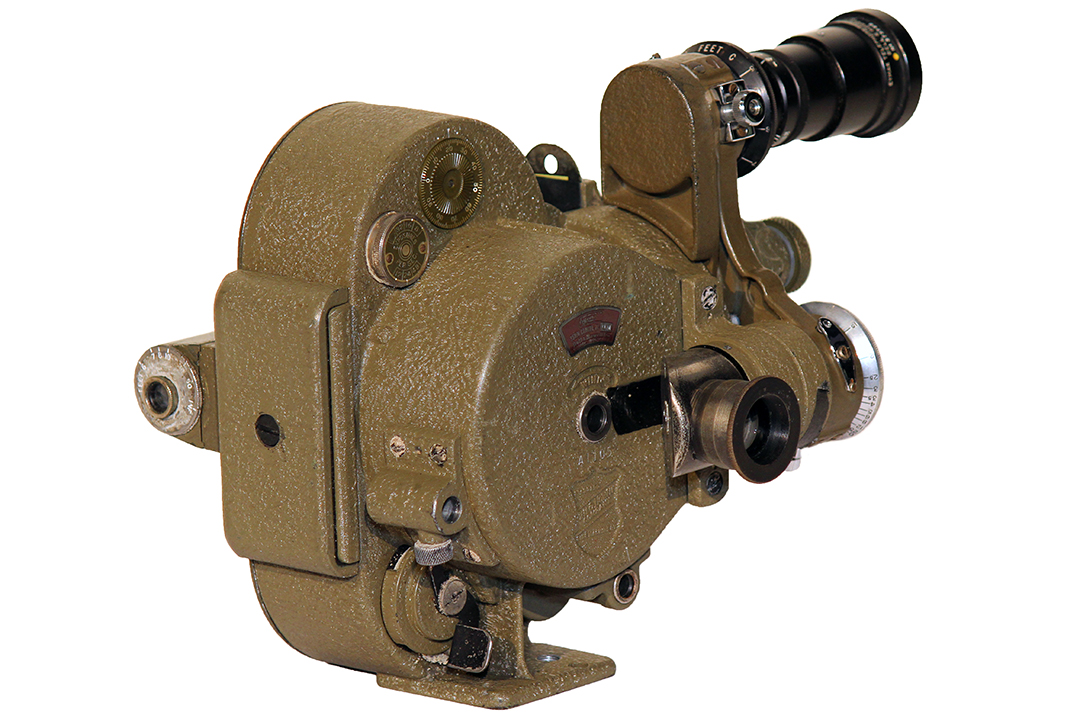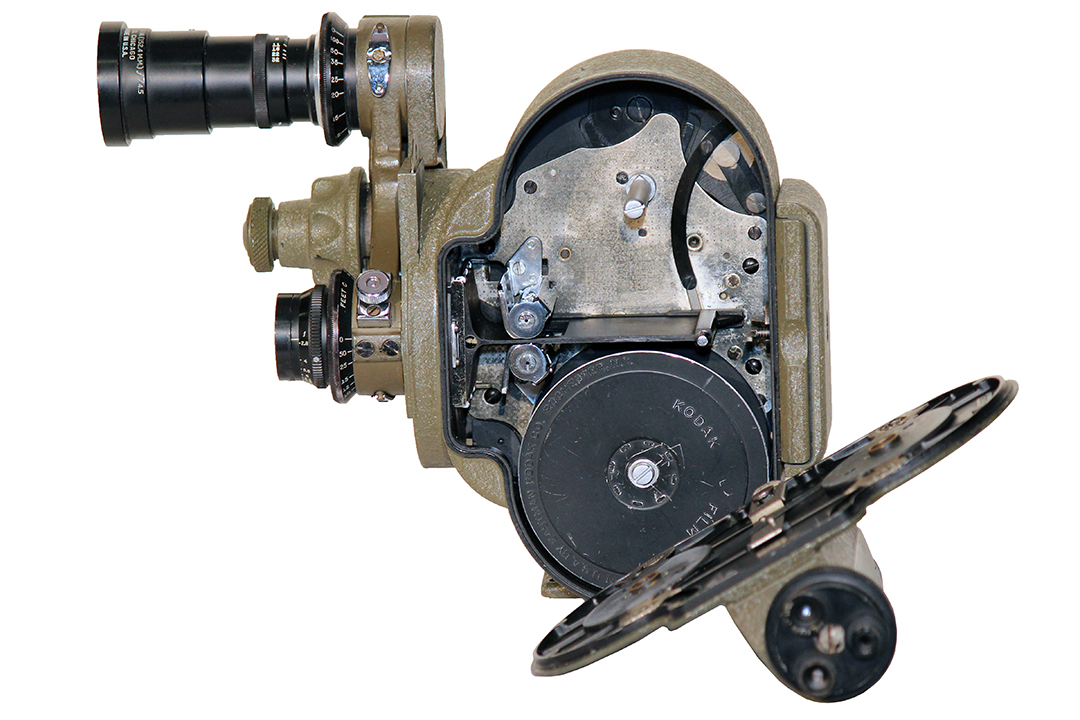
Bell & Howell Eyemo

$2,000
Item #C10731
Based largely on the earlier 16mm Filmo, the Bell & Howell Eyemo was introduced in 1925, and produced through the 1970's. The Eyemo is a 35mm spring motor driven motion picture film camera with a 100' internal daylight load capacity. The Eyemo is a small, rugged camera, and in the base model, it includes a single lens port. Over time, the Eyemo evolved and more features and accessories were added. In 1929, a version with a 3 lens "spider" turret was introduced. An electric motor and the ability to use external magazines became available in 1932. The Eyemo remained popular for more than five decades, seeing wide use in newsgathering, combat and documentary photography, and as a crash camera. This particular camera features a 3 lens Spider turret with 3 Eyemo mount lens ports and comes in a military issue fitted case. Camera is offered as is, unrestored.
Photo Gallery:
A Brief History of Bell & Howell
The Bell & Howell Company was founded in 1907 in Chicago, IL by Donald J. Bell and Albert S. Howell. Bell began his career in the movie business working as a projectionist. Howell had moved from Michigan to Chicago where he found work building and repairing projectors. In 1906, Howell patented a device that improved framing for 35mm Kinodrome projectors. Bell and Howell joined forces soon after this and formed their own company in 1907. Bell & Howell began by manufacturing, jobbing, leasing, and repairing machines for other companies in the Chicago area, helped along by Bell’s contacts in the movie projection business, and Howell’s inventive genius. After their first years in business, they began designing their own equipment. Their first original project focused on reducing the flicker of movie projectors and standardizing film sizes.
By 1908, Bell & Howell had successfully refined the Kinodrome projector to reduce flickering, and begun their work to standardize motion picture film to 35mm in width. They would no longer build or repair equipment using anything other than 35mm film after this point. By 1910, they had constructed their first camera, this canera was made of wood and leather. On an expedition to Africa, one of their cameras was heavily damaged by termites and mildew, and so they began redesigning the camera to be made of metal. In 1912, the all metal, design 2709 Standard Cinematograph motion picture camera was introduced to great fanfare. It quickly earned a reputation for precision, durability, and reliability that made it a favorite camera of the film industry for nearly five decades. The Bell & Howell 2709 was the preferred camera of industry pioneers such as Charlie Chaplin and Mary Pickford. Even after the 2709 fell out of favor as a studio production camera, its steady, reliable movement made it well suited for visual effects and optical printing work.
The Bell & Howell company came under new leadership in 1916, when founder Donald Bell left the company and Joseph McNabb took over as president. McNabb was interested in diversifying their product catalog and developing products for the amateur market. Their initial prototype camera intended to target the amateur market used 17.5mm film, a format that never really caught on. In 1920, Howell and McNabb were invited by George Eastman to Rochester, NY to see Kodak's experiments in 16mm safety film. Bell & Howell decided to adopt the 16mm format as their new standard, and adapted their prototype to Kodak’s new spec. The model A Filmo debuted in 1923, shortly after Kodak launched their new 16mm film stock. Bell & Howell’s initial offering also included a 16mm Portable Cine Projector. Over the years, the Filmo line expanded to include a variety of 16mm and 8mm cameras and projectors. Demand for these amateur level cameras was so great that these products made up nearly 2/3 of all of Bell & Howell’s development work for the next two decades.
Sources:
- "A New Camera for Screen News Cinematographer," Transactions of the Society of Motion Picture Engineers, (January 1926): 77-81.
- "Bell & Howell Introduce New Automatic Camera," American Cinematographer (September 1925): 5.
- "The Camera Now Used by the Industry for News Reel, Stunt Shots and Special Effects," American Cinematographer, (July 1926): 14.
- "Scooping the Picture with Eyemo," ad in American Cinematographer (October 1925): 14.
- International Directory of Company Histories, Vol. 29. (1999), quoted in D.D. Teoli Jr., "Bell and Howell Company - Company Profile, Information, Business Description, History, Background Information on Bell and Howell Company" View source.
- Earl Theisen, "The Story of Bell & Howell," The International Photographer, (October 1933): 6-7 and 24-25, View source.
- "Albert Summers Howell Elected to Honorary Membership in A.S.C." American Cinematographer, (August 1929): 3-4, View source.


